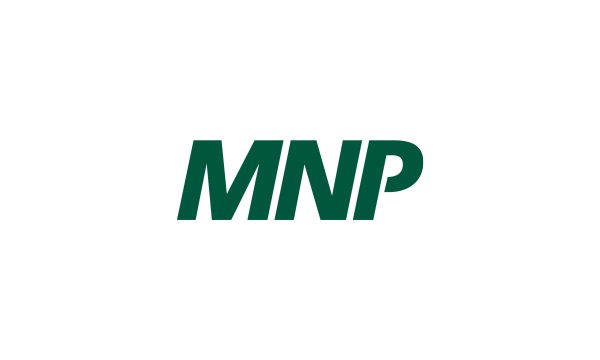Panera Bread continues to evolve its offering using a mix of technology and common sense to better meet customer needs

 Business is always a bit of a risk, but there are times when the wildest gambles pay off. And that’s exactly what happened with one of the most successful American restaurant chains in recent years, Panera Bread.
Business is always a bit of a risk, but there are times when the wildest gambles pay off. And that’s exactly what happened with one of the most successful American restaurant chains in recent years, Panera Bread.
Ron Shaich originally thought he’d go into politics, but starting a student-run convenience store in university convinced him that his strength was in running a business. Once out of school, he became a sales manager for Original Cookie Company, which sold baked goods in mall stores.
He thought it could be successful outside of malls as well, but his superiors disagreed. So in 1980, Shaich opened his own bakery in downtown Boston. Soon after, seeing promise in a struggling chain of three bakery shops named Au Bon Pain, he merged it into his company.
The gamble paid off, and Au Bon Pain expanded to 225 stores, going public in 1991. Two years later, the company acquired the St. Louis Bread Company, a small chain of cafés. Shaich preferred the idea of a restaurant to that of a take-out bakery and took an even riskier chance: he sold off the larger and well-established Au Bon Pain to concentrate on the tiny new acquisition, which he renamed Panera Bread. It turned out to be the right choice.
Panera Bread has been credited with creating (or at least popularizing) the “fast-casual” segment, one of the fastest-growing in the industry and which now includes competitors such as Chipotle Mexican Grill, Baja Fresh, and Pret A Manger.
The concept is a hybrid between fast-food outlets such as McDonald’s, and casual dining restaurants such as Applebee’s: priced between the two, food made fresh with quality ingredients, and where customers line up and order from a menu board, but eat in a restaurant-style setting. Panera specializes in sandwiches, soup and salads, with a bakery area for take-away bread and pastries.
The company now has some 2,000 outlets. It opened its first Canadian store near Toronto in 2008 and currently has nineteen in Ontario, divided between two independent franchise operators, and with one corporate-owned location.
From Panera’s public offering in 1999 to the third quarter of 2016, the company’sstock rose almost 7,500 per cent.
The company tackled many challenges along the way. Panera’s traditional method was to have customers order and pay at the counter. They were then given cups to serve themselves at the drink station, which moved them toward the dining area. They were also given a pager, which went off to signal them to pick up their meals at a separate counter.
But at lunch, when the company does more than half its business, long lines at the order counter meant that many people left in favour of stores that could better accommodate their short lunch breaks.
To deal with the issue, Panera has begun installing kiosks, where customers can order and pay through a touchscreen. The kiosks speed up ordering and also reduce the number of incorrect orders, which Panera says happens in one out of every ten. That’s slightly better than the industry average, and customers with wrong orders receive a corrected one, along with a free pastry.
Panera says that while it reduces workers at the cash registers, the faster process creates more orders, requiring more employees to make and deliver the food, guided by a tracker that indicates where the customer is sitting.
The company also offers online ordering at select stores, including through a smartphone app, with a “Rapid Pick Up” option where the meal is placed on a specific counter for customers to quickly grab when they arrive. Catering orders can also be entered online for pickup or delivery.
Since everything is captured digitally, the data is available for Panera to analyze and track store performance, assess menu item popularity, and to offer personalized app services, such as favourite choices or their order history.
 In 2010, Ron Shaich stepped down as CEO. With more time for other company business, he launched the charitable Panera Cares program. The company had always been generous with its charity work, including donating unsold food at the end of each day. But Shaich felt he could do more, and he studied a pay-as-you-can restaurant in Denver.
In 2010, Ron Shaich stepped down as CEO. With more time for other company business, he launched the charitable Panera Cares program. The company had always been generous with its charity work, including donating unsold food at the end of each day. But Shaich felt he could do more, and he studied a pay-as-you-can restaurant in Denver.
The first Panera version opened in St. Louis, Missouri, with a donation box instead of a cash register and a “take what you need, leave your fair share” policy. No one is turned away if they need something to eat, although there are suggested donations, and those who require more than an occasional meal are directed to local resources such as food banks.
Those who can’t pay are asked to volunteer their time in return for a meal voucher. To reduce costs, day-old bread is brought in from other stores. The cafés must at least break even, which they do largely through customers who donate by paying more than asking price.
Not all the Panera Cares restaurants worked out long-term — one near Chicago closed when required renovations would have been too costly, while another in Portland, Oregon was used primarily as a hangout by the homeless, leading to its closure — but the company still operates three, in Boston and in Dearborn, Michigan, along with the original St. Louis location.
As with some other restaurant chains, Panera has also vowed to use only cage-free eggs by 2020, uses antibiotic-free meat, and is adding more vegetarian choices to its menus.
Ron Shaich once said that obsession with shareholder value is a “narrow definition of success” and that he looks “beyond the shareholder,” with profits and stock prices becomingby-products of delivering to everyone involved.
By looking for opportunities no matter what their size, he was able to make differences in his business that a broad strategy might have overlooked, and that getting the “right stuff done” is the key.
Certainly, for Panera Bread, it seems to be working.












